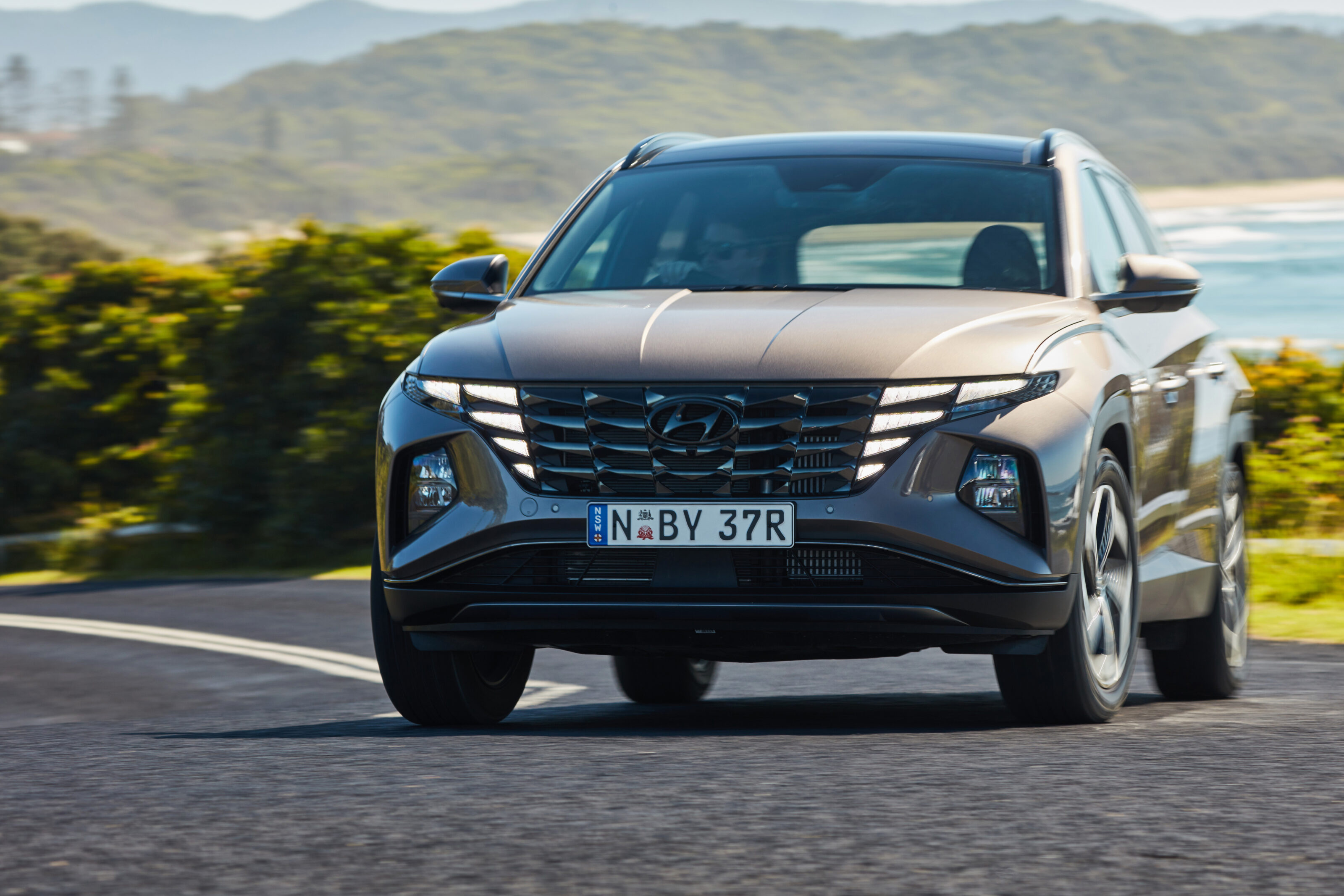Score breakdown
Things we like
- Looks great inside and out
- Packed with features
- Class-leading safety tech
Not so much
- Lacklustre powertrain
It’s incredible to think just six years and a generation separates the striking all-new fourth-generation Hyundai Tucson and the frumpy second-generation model known here as the ix35.
The intervening years saw the third-generation Tucson offer up sharper looks that made people look twice at Hyundai’s medium SUV offering and helped cement the brand’s top-three status in Australia.
And the 2021 Tucson has honed the aesthetic even further, being the first model to exhibit Hyundai’s Sensuous Sportiness design language that brings more angles than an origami swan including a sharp shoulder line, bulging wheel surrounds and bold character lines including a distinctive Z-shape on the back door.
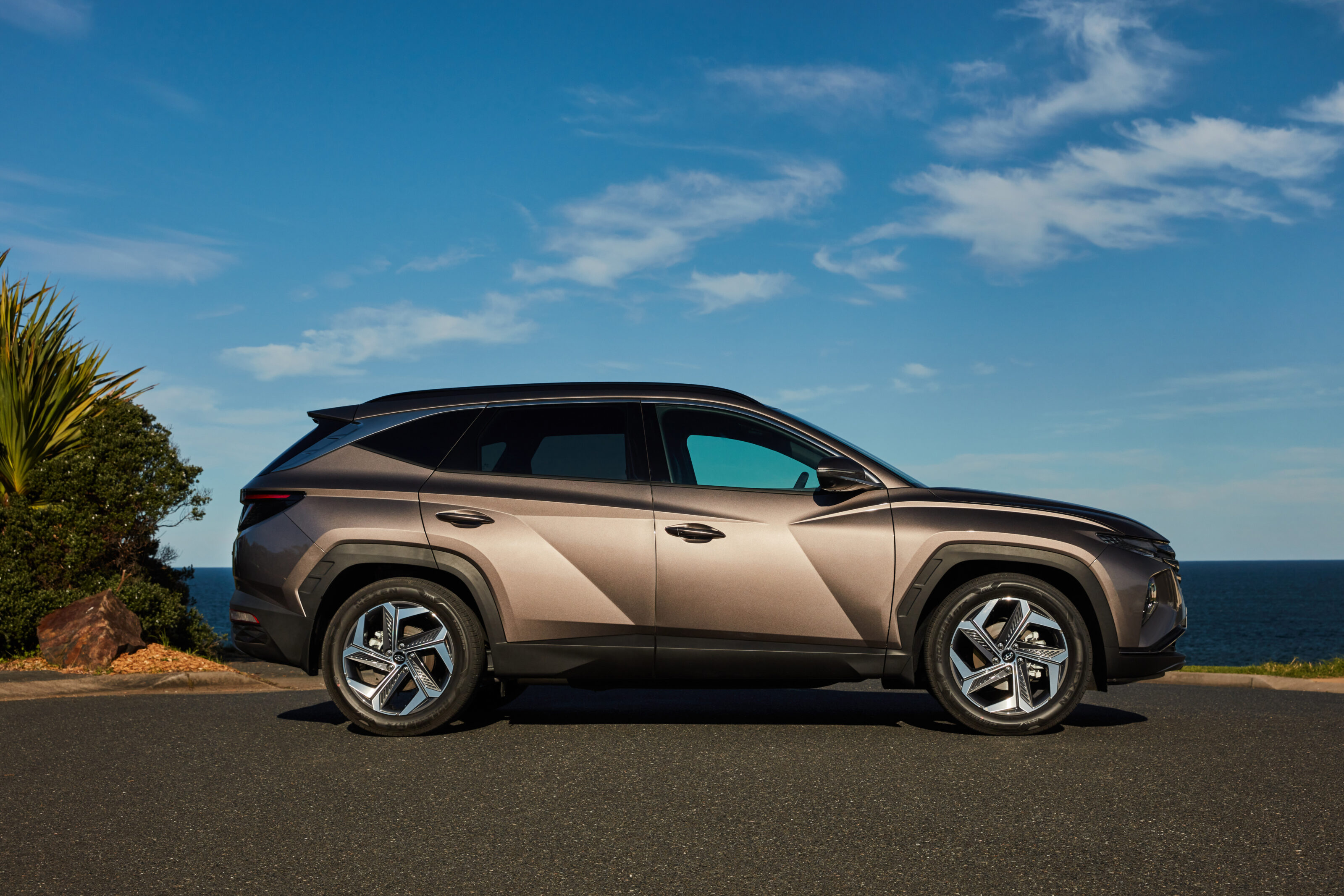
Then there’s the cascading parametric grille with embedded daytime running lights and turn signals that are only visible when turned on and a full-length LED taillight signature.
Inside, the Tucson has a crisp new interior and plenty of standard kit including active safety technology that’s new to the mainstream medium-SUV segment.
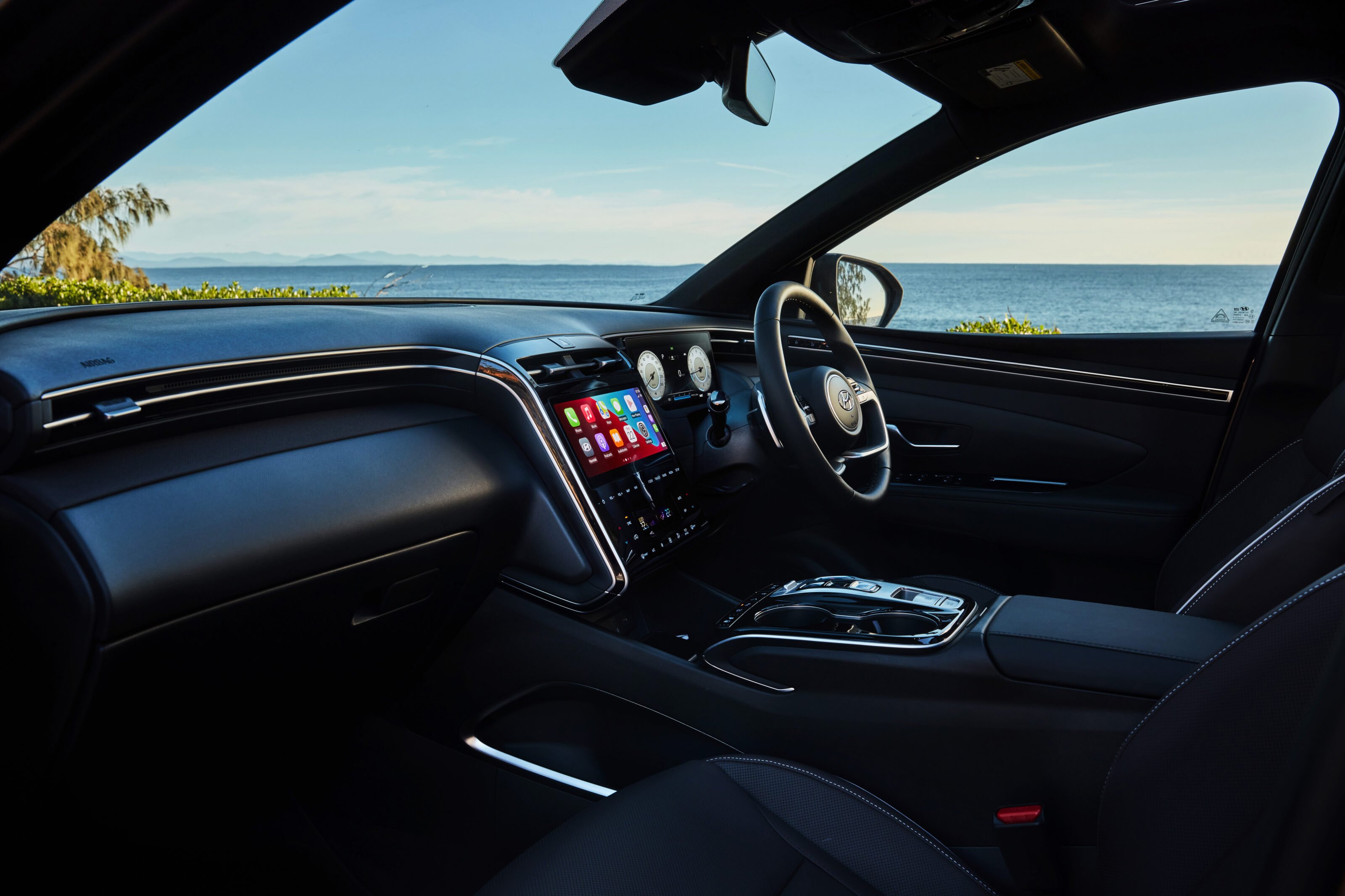
“The engines sitting upfront of the Australia-bound Tucsons are a not-so cutting-edge mix of four-cylinder powertrains…”
However, the engines sitting upfront of the Australia-bound Tucsons are a not-so cutting-edge mix of four-cylinder powertrains including a 1.6-litre turbocharged petrol with a seven-speed dual-clutch auto and a 2.0-litre turbo-diesel with eight-speed torque converter automatic – both of which drive all four wheels.
Then there’s this 2.0-litre naturally aspirated petrol with a six-speed auto that drives the front wheels only and was the only powertrain available at launch and is available in all three spec grades including the eponymous base spec, the Elite and range-topping Highlander that is the focus of this review.
What is the Hyundai Tucson Highlander FWD like to live with?
Tucson pricing starts at $34,500 before on-road costs for the entry-level model that’s only available with the 2.0-litre petrol FWD drivetrain. It comes with a decent standard features list including a centre airbag between the driver and front passenger, wireless phone syncing, tyre pressure monitor, drive-mode selector, softer trim materials, four USB ports, auto-folding door mirrors and 17-inch alloy wheels.
Then there’s additional advanced driver assistance such as the segment-first blind-spot collision avoidance plus rear cross-traffic collision avoidance, intelligent speed-limit assist, leading vehicle departure alert, adaptive cruise control with ‘Stop & Go’, and camera- and radar-based AEB that also works to prevent or mitigate collisions at intersections.
Priced from $39,000, the mid-spec Elite adds leather upholstery, heated front seats, the 10.25-inch infotainment screen, multi-air climate control and 18-inch alloys.
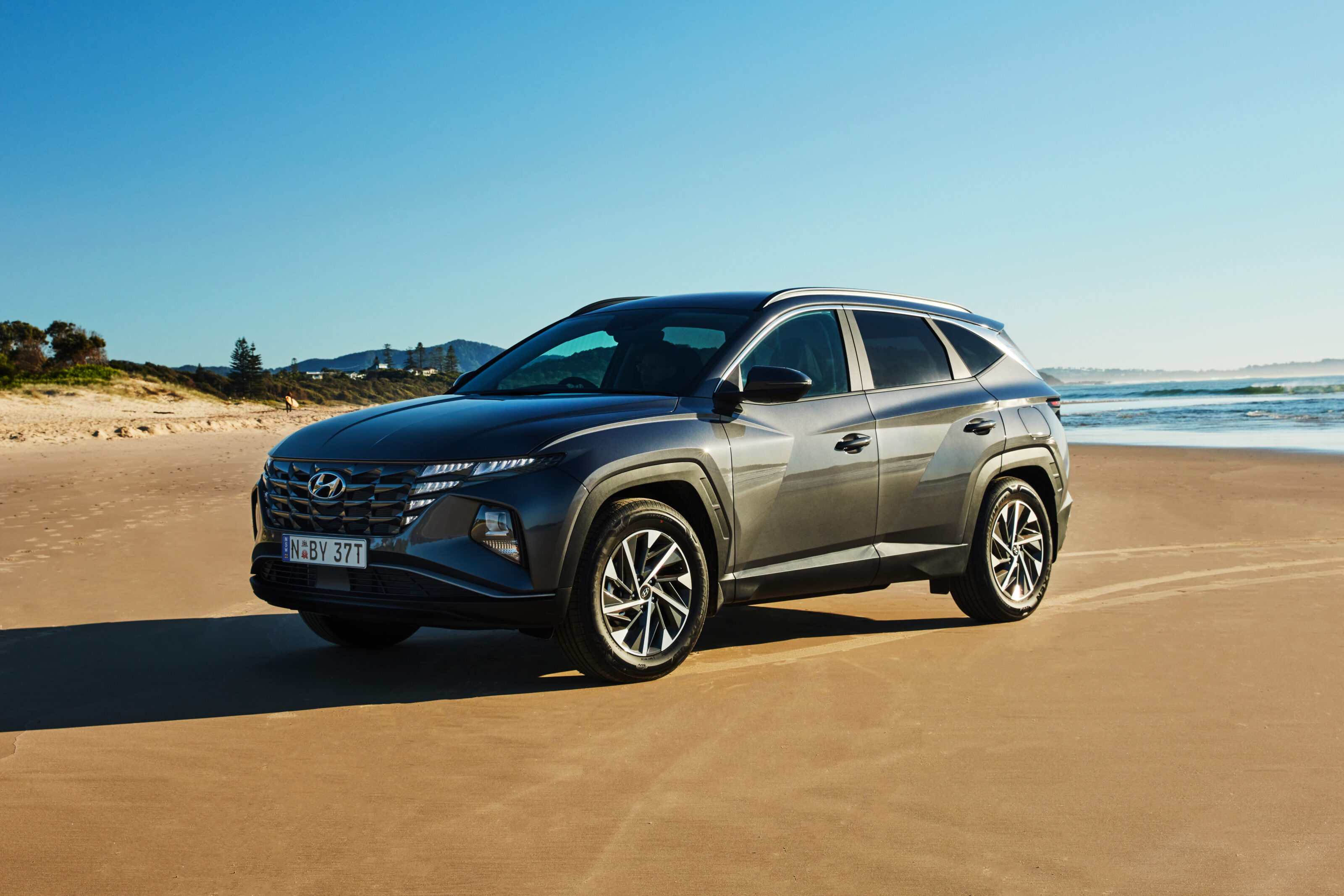
The Elite is also available with both AWD drivetrains, the 1.6-litre turbo-petrol priced at $43,000 and the turbo-diesel $45,000.
Finally, the Highlander brings the full enchilada and is also available with all three powertrains, with pricing starting at $46,000 and other powertrains attracting the same respective $4000 and $6000 premiums as the Elite.
These prices bring a panoramic sunroof, hidden DRLs within the dark-chrome grille, LED taillights that run across the width of the car, LED ambient lighting, heated front and rear seats, ventilated front seats, BOSE premium audio, powered front seats with driver’s memory settings, heated steering wheel, powered tailgate, 360-degree camera, multi-terrain mode, blind-spot view monitor on the digital dashboard, remote parking, parking collision avoidance assist and 19-inch alloy wheels.
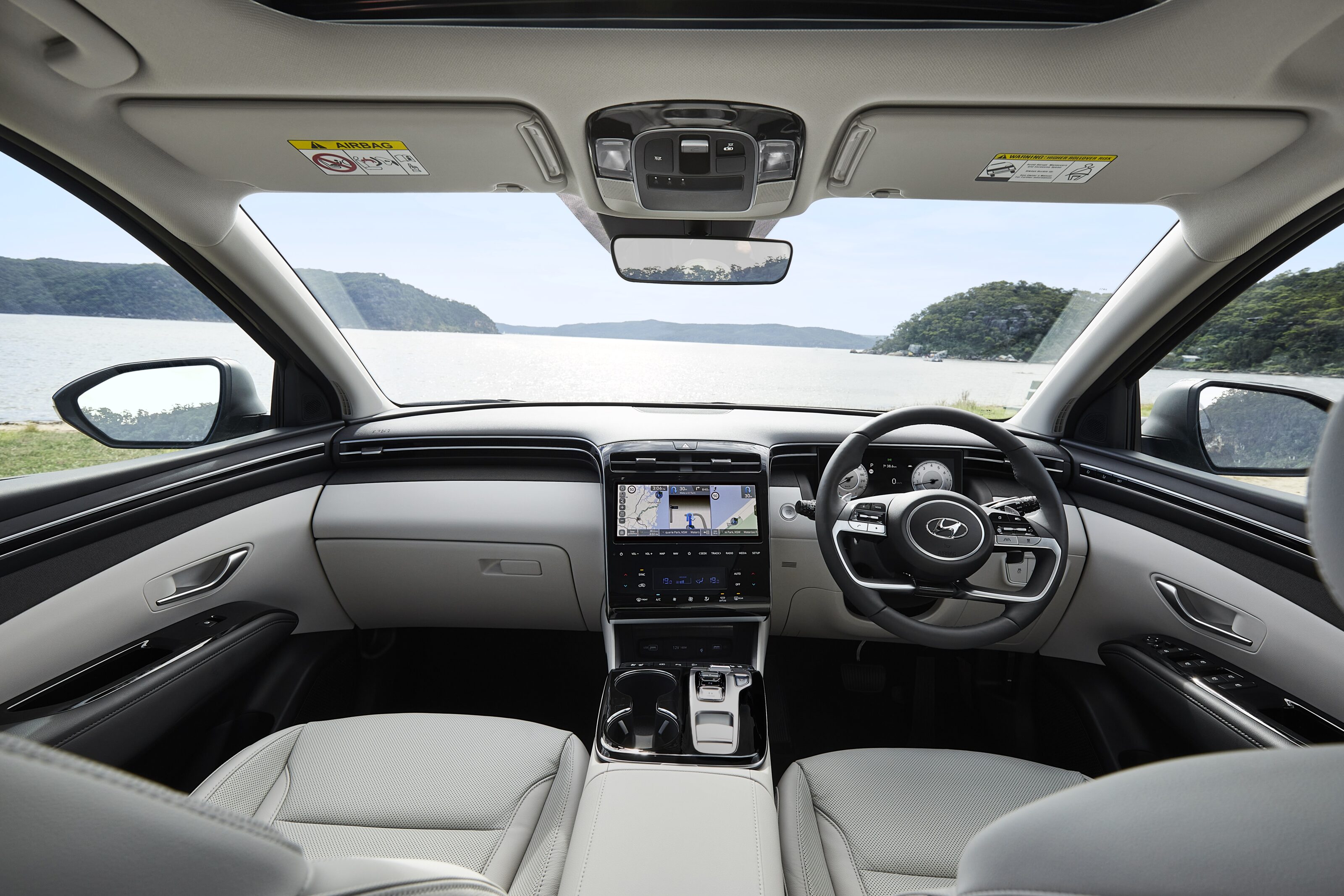
If someone is won over by the Tucson in a showroom it’s likely to be when they slide into the cabin. The floating touchscreen look seems consigned to history with the monitor part of an attractive glossy head that flows down to the centre console.
This allows for the dashboard top to be totally free of clutter and I reckon Hyundai’s designers took inspiration from the Toyota Tarago by the way it curves into the door cards to provide a greater sense of space.
The fit and finish are excellent and you won’t find any hard plastics up front higher than the door armrests, even in the entry-level Tucson. In the Highlander, it looks very premium indeed, particularly with the light grey or brown trim that are a $295 option over the standard black leather.
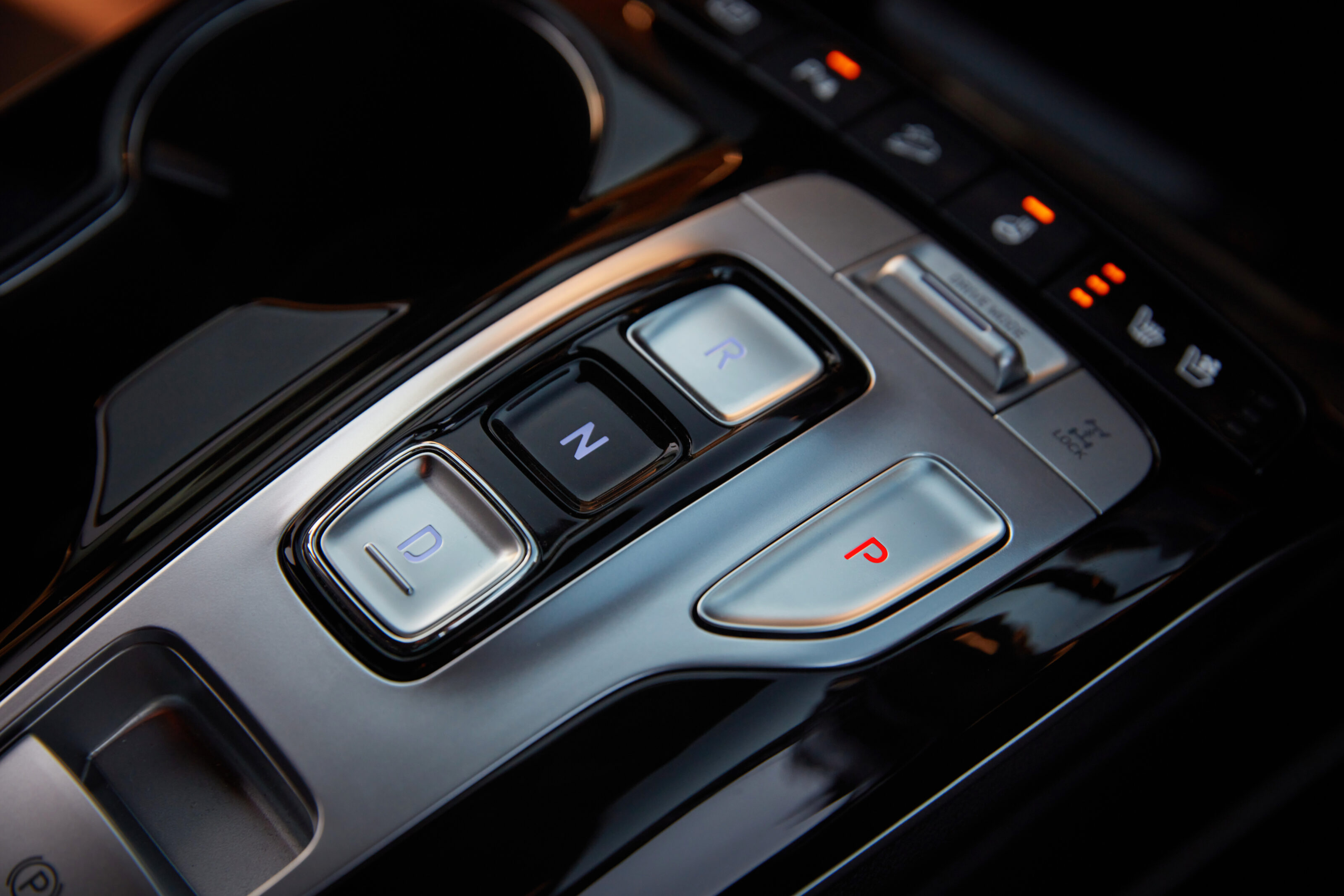
The front seats are comfortable and apart from getting the pedal and steering wheel reach right I barely had to play around with the power settings to find a relaxed driving position.
Like the dashboard, the elevated centre console has no protruding clutter with even the shift-by-wire gear buttons sitting flush into the fascia. There’s a decent-sized storage bin, two cup-holders and a wireless phone charging pad that’s slightly tilted to allow for ventilation underneath and prevent the device from overheating.
The rear seats are also comfortable. The Tucson’s 2755mm wheelbase brings plenty of leg and knee room and there’s a nice gap under the front seats to fit your feet. Despite the swept-back roofline and sunroof, headroom isn’t too bad either.

Fitting three adults across the bench might be a bit of a squeeze, but whoever cops the middle will be pleased to see the Tucson has a very shallow transmission tunnel that allows for reasonable legroom.
You’ll have no issues fitting three younger people across the back and if you need to put them in child seats there are ISOFIX anchor points at the outboard seats and three top tethers.
With two rear passengers, there’s a fold-down centre armrest with two cup holders. Other rear storage options include map pockets behind the front seats and pokey little door bins designed to take a bottle. Rear seat passengers also get their own air vents and there are two USB sockets.

With the rear seats up, the boot holds 539 litres, making it one of the biggest in a medium SUV. The Tucson has a full-sized spare wheel under the boot floor, so it compares well with the Toyota RAV4 that holds 542 litres with the optional full-sized spare.
Folding the Tucson’s rear 60:40-split seatbacks down brings up to 1860 litres.

The 2.0-litre engine has an official combined fuel economy figure of 8.1L/100km and will happily consume cheaper 91RON unleaded.
Service intervals are every 12 months or 15,000kms, whichever comes first, with each scheduled service costing $319 for the first five years.
Hyundai also provides a complimentary first service at 1500km as well as free roadside assist for the first 12 months and its five-year/unlimited-kilometre warranty.
What is the Hyundai Tucson Highlander FWD like to drive?
The previous model Highlander was only available with the turbocharged petrol and diesel AWD powertrains, but Hyundai has opted to provide the more affordable 2.0-litre front-driver as an option for people who fancy all the premium trappings but aren’t too fussed about performance.
But even if performance is down the bottom of your list there will be times when you’ll find the new SmartStream MPI engine wanting, particularly when tackling hills.
Curiously, the new 115kW/192Nm 2.0-litre donk produces 7.0kW and 13Nm less power and torque than its predecessor while bringing nothing obviously new in terms of technology.
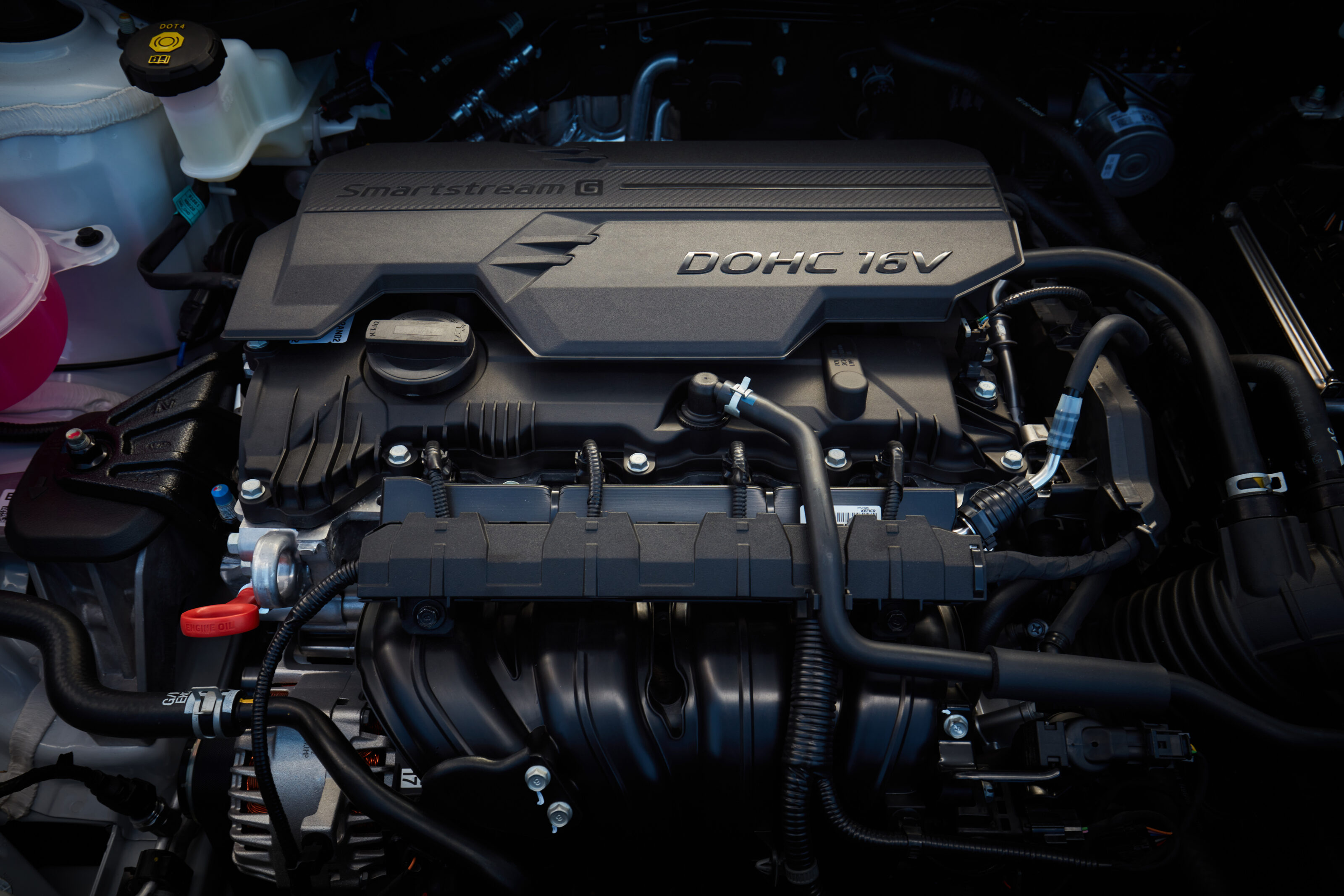
This isn’t really an issue when driving around town, despite the new Tucson being a little heavier than before, but plant the right foot to negotiate a hill or to overtake, and, to quote Shakespeare, ‘doth protest too much, methinks’.
Reaching 2500rpm in quick time catches the six-speed auto napping and it seems to have trouble finding the right gear, making the engine scream at about 3500rpm for a few seconds before either finding the right cog or, if the pedal is still touching the floor, continuing up the power band to reach peak torque and power at 4500rpm and 6200rpm respectively.
To its credit Hyundai let us drive this car over some challenging and hilly roads between Sydney and Orange where this is more of an issue than driving around town, but expect entering a freeway to be a little loud.

There are four drive modes; Eco, Normal, Smart, and Sport that helps you break through that barrier quicker on the way to peak power bands.
This can be overcome on flatter surfaces by being a little gentler on the throttle, but it’s pretty hard to avoid when faced with hills.
At lower speeds or once the six-speed auto decides to settle into gear, the 2.0-litre engine seems quite happy and is pretty quiet even at highway speeds.
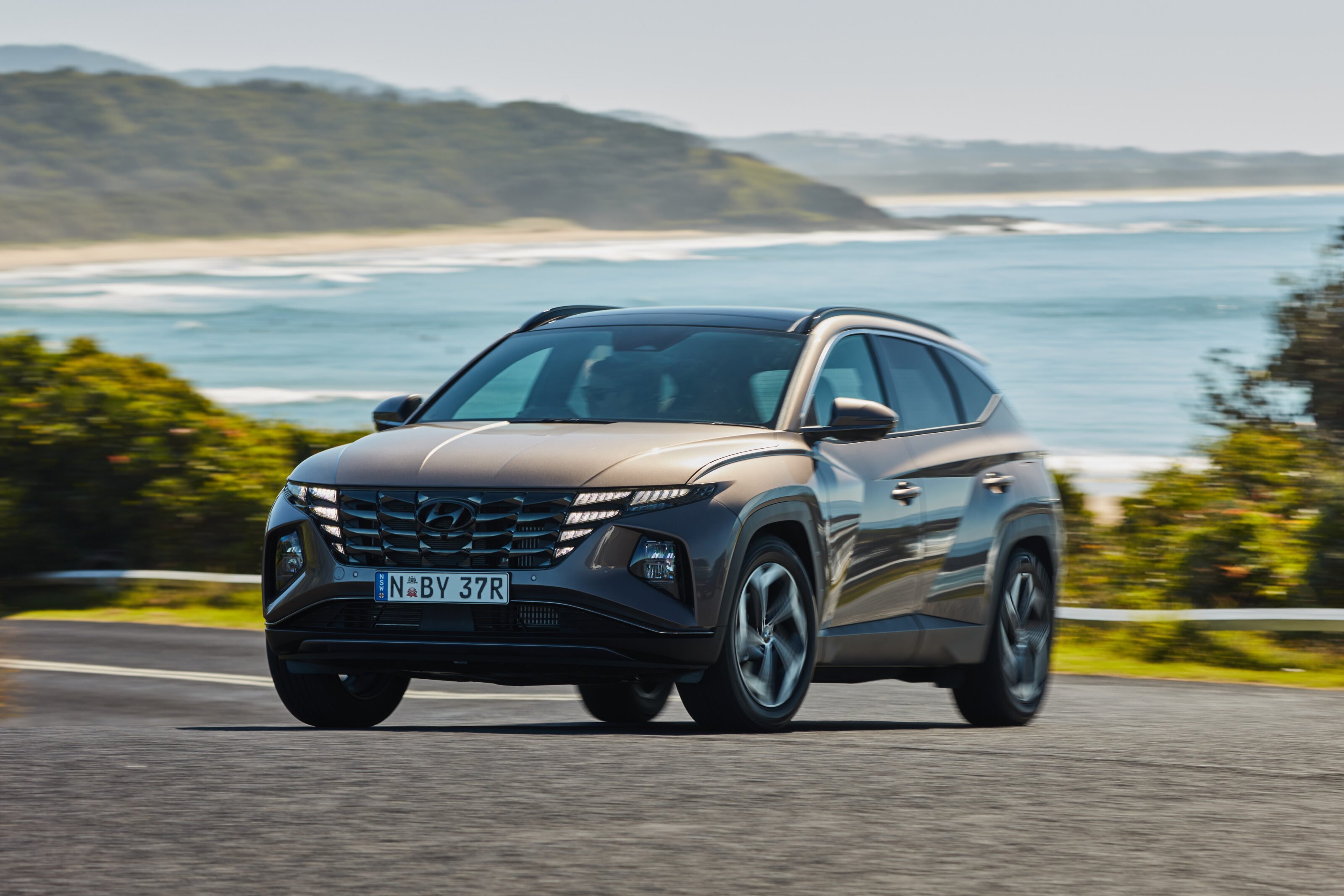
Ride and handling are pretty good despite the Tucson’s new chassis and suspension not being subject to the Australian tuning program bestowed on most of its siblings.
Even so, the ride feels composed on all surfaces including gravel, even on the Highlander’s 19-inch wheels shod with 235/55 R19 Nexen Roadian GTX rubber.
The rear multi-link suspension absorbs big bumps well but could get a little busy on continuous smaller imperfections that are common on rural highways.
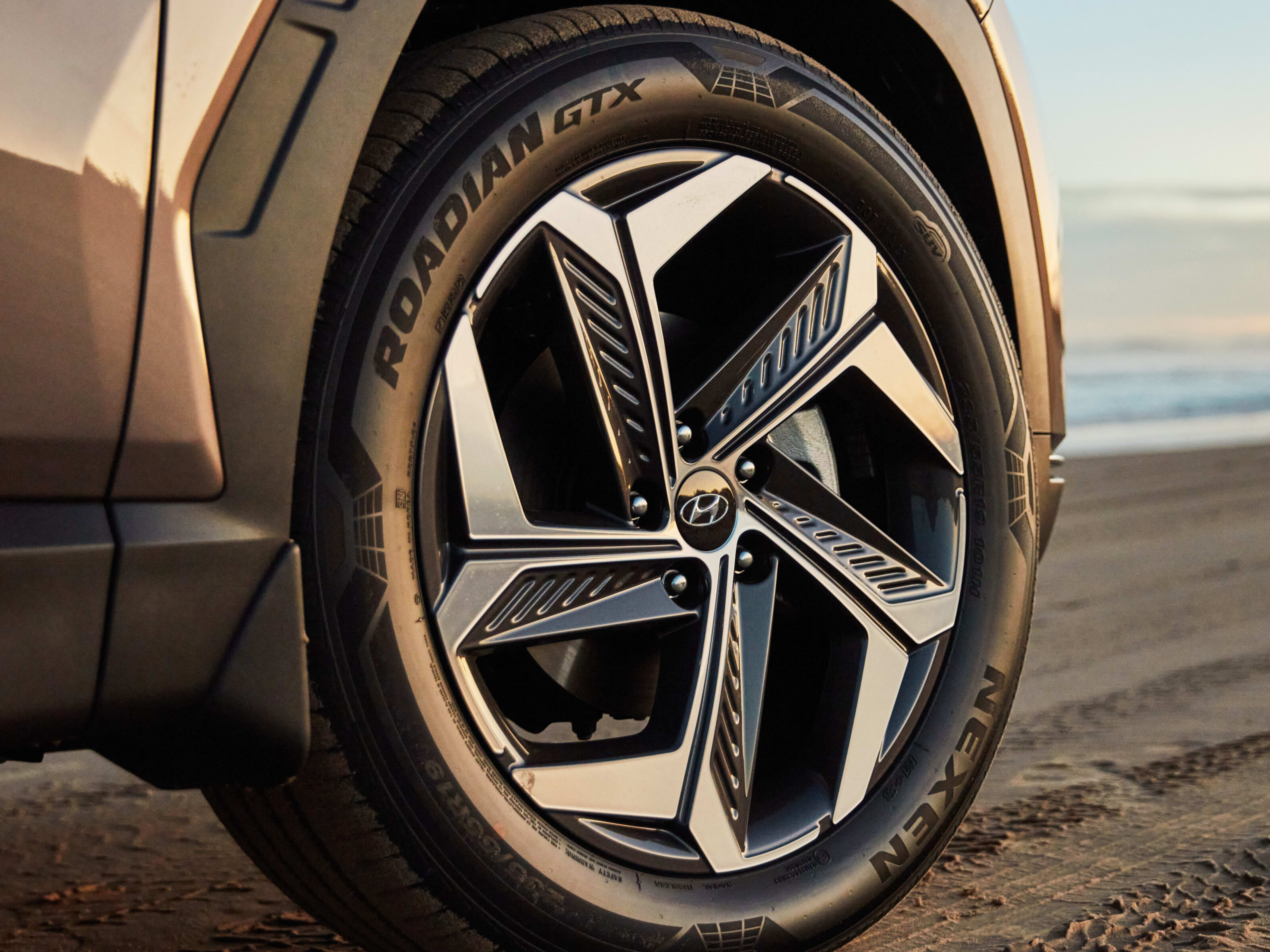
Lateral movement is well contained on bends and there is good front/rear compliance, while the column-mounted power steering felt light but direct.
Even with power only going to the front wheels, there were no issues with traction on gravel and during heavy rain and at no time did I find myself wishing for all-wheel drive.

What is the Hyundai Tucson Highlander FWD like for safety?
According to Hyundai, the Tucson is the first medium SUV to come equipped with blind-spot collision avoidance tech that actively prevents you from cutting off a vehicle coming up your side. The Highlander also features a segment-first blind-spot view monitor on the digital gauge cluster and a remote smart parking assistant that can navigate its way out of a tight parking spot without you having to squeeze into the driving seat first.
It’s also the first Hyundai to feature intelligent speed limit assist that, when set, detects a speed sign and ensures the vehicle doesn’t exceed that limit.
Another Hyundai first is a centre airbag to separate the driver and front passenger during an accident, which also makes it the brand’s first model to come with seven airbags.

Other cutting-edge active safety features include parking collision avoidance assist that detects pedestrians as well as vehicles and hard obstacles, autonomous emergency braking (Hyundai calls it Forward Collision Avoidance) that detects cars and pedestrians and will partially apply brakes at speeds up to 180km/h or fully brake at up to 85km/h.
The auto braking also works at junctions and is complemented by rear cros-traffic collision avoidance that brakes if it detects a vehicle coming from the side when reversing.
There is also Safe Exit Assist system that uses radar sensors on either side of the rear bumper to detect road users approaching from the rear and will issue an audible alert and a warning on the digital instrument cluster if anyone opens the door when something is approaching.
The 2021 Hyundai Tucson has yet to be awarded an ANCAP safety rating.
The Verdict
The 2.0-litre, six-speed automatic powertrain runs contrary to Hyundai Australia’s ‘tomorrow’s car today’ marketing campaign for the all-new Tucson.
However, it does come with plenty of new technologies and creature comforts to set a new standard in the medium-SUV segment that should see it do well against the likes of the Toyota RAV4 and Mazda CX-5.
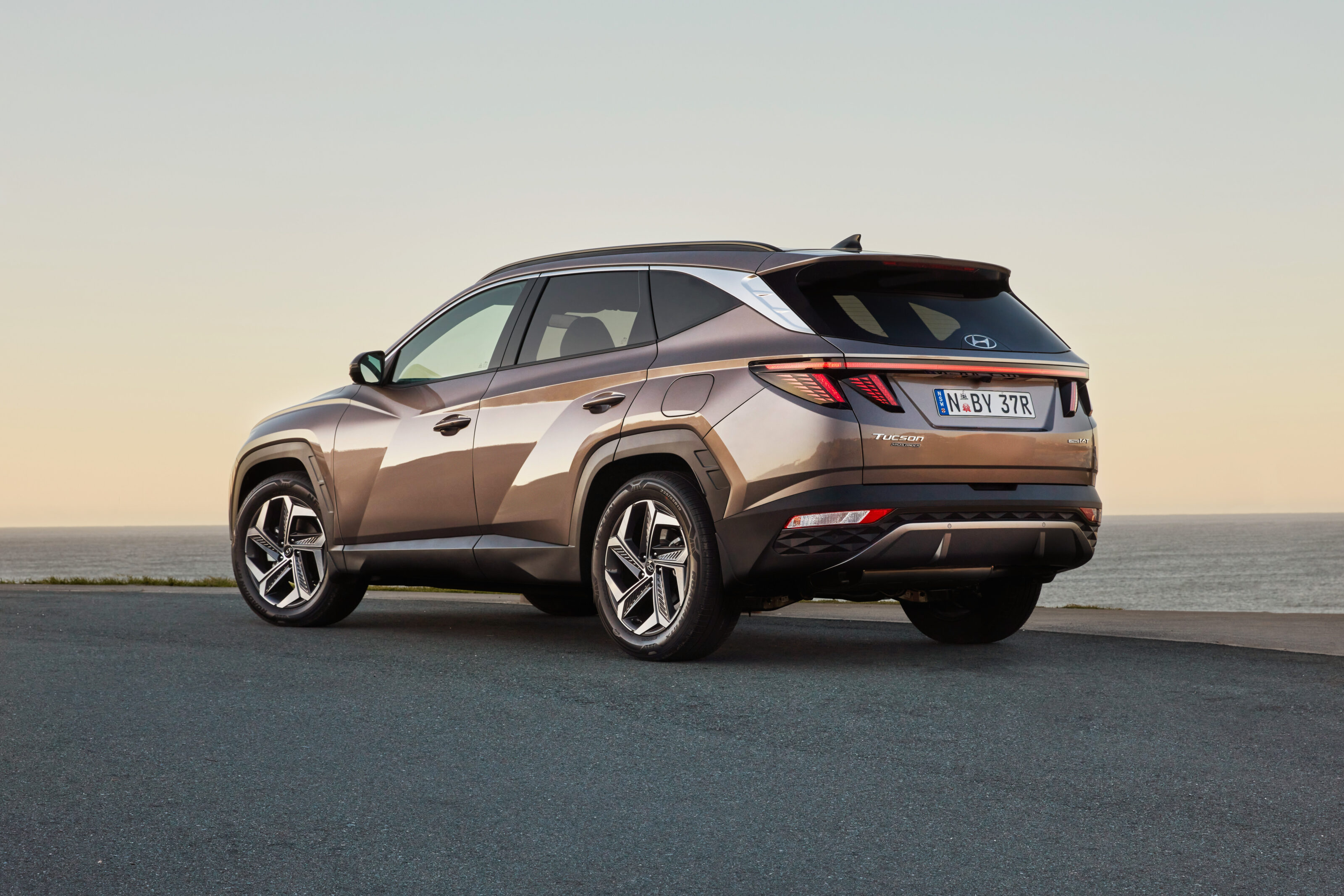
As with the previous model, the FWD 2.0-litre petrol won’t be the pick of the bunch but in the Highlander, it does offer a good way of getting into a premium-equipped and styled SUV for less than $50,000.
If you’re happy to go with this powertrain it’s worth noting that an N-Line package will be available in mid-2021 for all three variants that will bring the digital gauge cluster, LED front and rear lights, leather and suede seats, 19-inch wheels and exterior garnish to the entry-level and Elite variants for an additional $3500 and $2000 respectively, which make them well worth a look.
Model Hyundai Tucson Highlander FWD specifications
Body: 5-door, 5-seat SUV Drive: FWD Engine: 1999cc 4-cyl, 16v Power: 115kW @ 6200rpm Torque: 192Nm @ 4500rpm Fuel consumption: 8.1L/100km (combined) CO2 emissions: 184g/km Compression ratio: 10.8:1 Weight: 1530kg Transmission: 6-speed automatic Suspension: MacPherson strut/Multi-link L/W/H: 4630/1865/1665mm Wheelbase: 2755mm Tracks: 1620/1627mm Brakes: Front ventilated discs (305mm) / Rear solid discs (300mm) Tyres: 235/55 R19 101H Nexen Roadian GTX Wheels: 7.5Jx19 Price: From $46,000
Score breakdown
Things we like
- Looks great inside and out
- Packed with features
- Class-leading safety tech
Not so much
- Lacklustre powertrain


